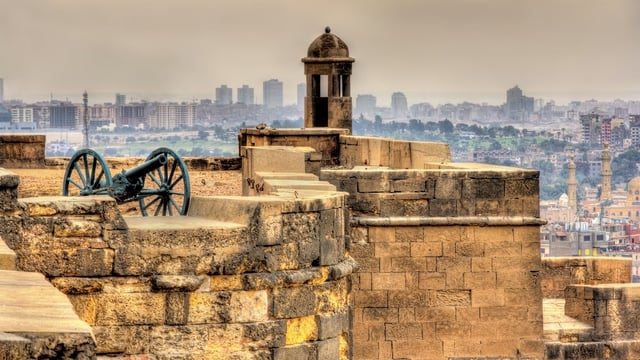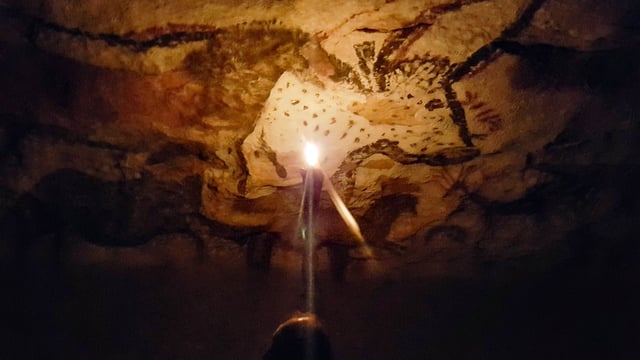Although much of the Royal Albert Memorial Museum’s collection comes from other parts of Europe and beyond, the museum also has a large collection of objects that were crafted and manufactured in the South West. The local archaeological exhibition at the RAMM provides a fascinating glimpse into the history of the southwest of England, including the nature of trade and exchange across the centuries. As a local who visits the RAMM quite often, here are my ten favourite artefacts that represent Devon and the southwest over a broad period of time.
- Jason Summers
- Last Checked and/or Updated 15 December 2021
- No Comments
- England
Elephant Tusk – Sidmouth (Late Pleistocene)
It’s difficult to imagine a gigantic elephant plodding along the modern-day seaside town of Sidmouth. Yet, it was here that this impressive fossil tusk was discovered. The species, known as a straight-tusked elephant became extinct in Britain around 110,000 years ago, at the beginning of the last glacial event. Remarkably, it is not entirely uncommon to find archaeological evidence of megafauna in this part of Devon (hippopotamus remains have also been uncovered locally). During the Ice Age, large mammals migrated across the region during periods of climatic change. It is believed that this particular tusk was preserved underneath an ancient riverbed.
Flint Sickle – Hembury (Neolithic)
Next on the list is this carefully crafted flint sickle – thought to be around 5,400-5,750 years old. The blade would originally have been hafted to a wooden handle, making it an ideal tool to harvest crops. It was found at the multi-period site of Hembury, where a Neolithic settlement once stood. Note the skill of craftmanship used to produce symmetrical edges – I have experimented with flintknapping myself and it is no easy task! The maker of this tool would have used a combination of hard hammer percussion to begin with, followed by a technique known as pressure flaking to achieve such a smooth finish. Because of its technical merit, this little blade is definitely worthy of a place in my chosen ten.
Shale Cup – Farway (Early Bronze Age)
This shale cup from East Devon was discovered by a reverend in 1868 (a chap called Kirwan). Appropriately named as the ‘Farway Cup’, it was carved entirely from one block of Dorset shale approximately 4000 years ago. The barrow, from which it was crudely excavated (not uncommon for 19th century archaeology), was placed with a cremation burial. The vessel was likely to have been ceremonial, as the only evidence of hard wear is the damage to its rim, caused (ironically) by a pick-axe during excavation! When visiting the museum yourself, look for the modern replica of this cup – set slightly behind the original. Manufacturing an artefact of this kind is estimated to have taken about 120 hours to complete.
Cremation Urn – Upton Pyne (Early Bronze Age)
Having myself discovered Early Bronze Age pottery during excavation – my eyes were instantly drawn to the familiar zigzagged patterning of this burial urn. I suspect the vessel may be missing a rim of some kind, although this takes nothing away from the object’s charm. It was excavated (along with others) from within barrow 248b, located at Upton Pyne in East Devon. Dating from between 3,300-3,500 years old, the urn contained a human cremation, and was deposited beside a central chamber. Burial practices changed significantly during Bronze Age Britain, and urns from this period come in a variety of shapes and sizes. Personally, I am rather fond of the tiny lugs on either side of this one.
Wooden Figure – Kingsteignton (Middle Bronze Age)
Gold Bracelets – Colaton Raleigh (Late Bronze Age)
Samian Ware – Exeter (Roman Period)
Pitcher – Mermaid Yard, Exeter (Medieval Period)
Common Seal of Exeter (Medieval Period)
This rather fine item bears the inscription ‘SIGILLVM CIVITATIS EXONIE’ – meaning ‘the seal of the city of Exeter’. It is made from silver (though now somewhat tarnished), and is currently the oldest surviving seal of any town and city in England (1170-1200 AD) – always nice when a local artefact has a claim to fame. There is also a depiction of an impressive building with towers either side, a symbol which proclaims power and status when stamped on important documents (normally approval of a financial transaction). The seal would have been used at the Guildhall here in Exeter. In my eyes, this artefact illustrates nicely the emergence of administrative processes within Medieval towns and cities in Britain.






